The People's Power List
A celebration of the kinds of individuals who have made the Sierra Club's achievements possible
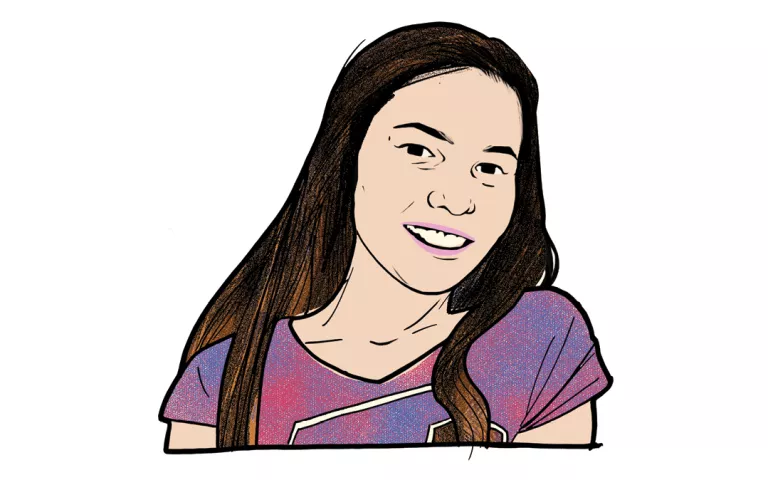
Illustrations by Jason Schneider
THE SIERRA CLUB DESCRIBES ITSELF as the "largest and most influential grassroots environmental organization" in the United States. What distinguishes the Club, however, is not its size or its influence but that word "grassroots." Ordinary people, working within their communities to defend the wonders of Earth, have always been the heartbeat of the organization.
To mark the Sierra Club's 125th anniversary, Sierra celebrates the kinds of individuals who have made the organization's achievements possible. There are few bold-faced names here; not all of these people are Sierra Club members. Rather, we've sought to highlight a few of the unsung heroes who embody the ethos that social change begins with people power. They are, each in their own way, allies and co-conspirators in the effort to explore, enjoy, and protect the planet.
Most of these power-listers aren't paid political organizers. They're the sort of people who come home from a long day of work, put dinner on the table and put the kids to bed, and then begin the difficult job of defending the environment. It's not especially glamorous work: crafting outreach emails, enlisting allies, organizing neighbors. But that's how change is made, and it's everyday people who make it happen. As one of our power-listers, Louisiana environmental organizer Cherri Foytlin, says, "I just want people to know that you don't have to have any special powers. You don't have to be a superman. You just have to be a human."
We couldn't agree more.
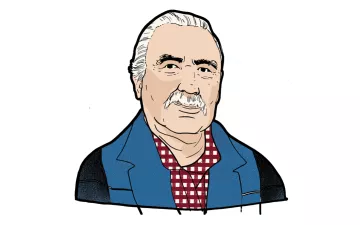
Willie Grayeyes
Public lands advocate | San Juan County, Utah
In designating Bears Ears National Monument last December, President Barack Obama made Willie Grayeyes's wish come true. The chairman of the board of Utah Diné Bikéyah—a Native American-led nonprofit working toward "healing of people and the earth by supporting indigenous communities in protecting their culturally significant, ancestral lands"—Grayeyes has long worked to preserve and protect public lands, and to stay abreast of developers' plans. Nowadays, he spends his time tirelessly traveling to public meetings throughout Utah and the West, encouraging people to oppose Utah leaders' efforts to overturn Bears Ears and privatize other lands. "At the focal point of my approach is healing—psychologically, socially, and so forth," Grayeyes says. "It's about accepting the fact that some beautiful landscapes have been defaced, and it's about deeply listening to one another."
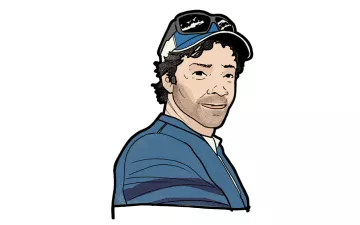
Pete McBride
Photographer, filmmaker, writer | Basalt, Colorado
When Pete McBride set out on a personal project to track the Colorado River from source to sea, he was amazed to learn that it didn't actually reach the Sea of Cortez anymore—and hadn't for over a decade. "The fact that one of the greatest, most iconic rivers in America had run dry predominantly because of human thirst was remarkable to me," he says. He published a book of photographs taken during his trip, which a Mexican delegation later referenced before signing 2012's Minute 319 treaty—a binational agreement with the United States to restore parts of the Colorado River Delta. McBride has worked as a photographer and filmmaker for National Geographic since 1998 and has traveled to 80 countries on assignment for it and other magazines and organizations. He uses captivating imagery and prose to relate the often-untold stories about why water conservation and public land matter. McBride calls himself a "curious citizen with a camera."
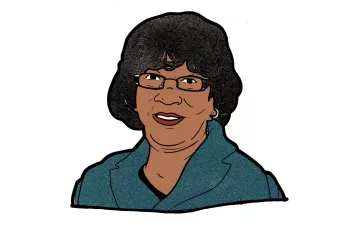
Pam Nixon
Clean-air and community-safety advocate | Charleston, West Virginia
In 1985, Pam Nixon was working at Saint Francis Hospital in Charleston, West Virginia, when the Union Carbide chemical plant in the nearby town of Institute released what she calls "a witches' brew of toxic chemicals." She was one of the 135 people exposed. It happened just nine months after the Union Carbide plant in Bhopal, India, released more than 40 tons of methyl isocyanate (MIC), killing 3,800 people and injuring another 200,000. "Usually you don't get involved in something until it impacts your life," she says. Nixon became a spokesperson for People Concerned About MIC, fighting for pollution controls and safeguards for the largely African American community in Institute. "That community was ground zero for chemical exposure, and our complaints were ignored." Although at one point she became ill with an autoimmune disorder, Nixon has continued to work tirelessly on air and water contamination issues in a variety of public roles, fighting for environmental justice across West Virginia.
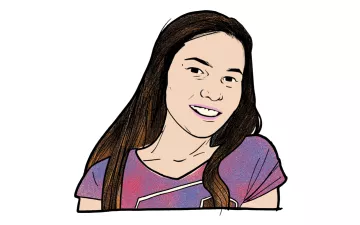
Nalleli Cobo
Environmental justice activist | Los Angeles, California
At nine years old, Nalleli Cobo started experiencing constant nosebleeds and headaches and developed severe asthma. An oil well owned by AllenCo had recently been drilled two blocks from her school in South Central Los Angeles, and she wasn't the only kid suffering. "I noticed these problems were seen as a normal thing in low-income communities of people of color," says the now-16-year-old. She responded by going door to door, holding meetings, and rallying her neighbors to join People Not Pozos (People Not Oil Wells). The organization worked with the EPA to get the operation shut down in 2013. Cobo, who's since become a leader in a youth coalition working to end drilling across L.A.—where thousands of low-income residents live among urban oil fields—credits her activist drive to her mother, Monic. "She came to this country from Mexico so we wouldn't have to suffer from discrimination," she says, "but the children of South L.A. have to fight for clean air."
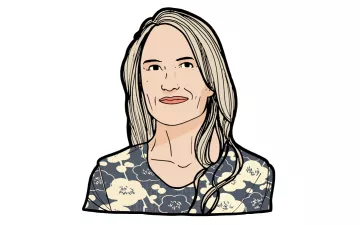
Amber Hasselbring
Artist and urban environmentalist | San Francisco, California
"Green hairstreak" sounds like a hairstyle you might encounter in San Francisco. In fact, it's a butterfly species (Callophrys viridis) that is increasingly rare in the area. In 2006, some were found barely hanging on in a chain of parks and open spaces. Enter Amber Hasselbring and her Nature in the City project, which worked with local residents, schoolchildren, and others to transform city streets into connective corridors. "We started planting the butterfly's larval food plants and nectar plants in tiny little medians and those little triangles where roads come together," she says. "Now there are butterflies flying throughout the neighborhood."
Hasselbring is an artist and gardener "on the edge of pure conservation and political activism." Her small nonprofit blends advocacy and education with habitat restoration and art—as seen in its lovingly illustrated pocket field guide to urban wildlife. "Artwork is a great way to inspire connections," she says.
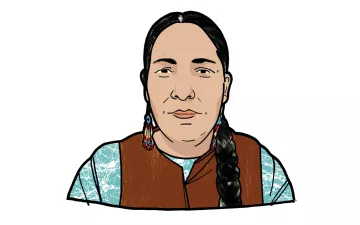
Cherri Foytlin
Oil and gas watchdog | Rayne, Louisiana
Although Cherri Foytlin always cared about the environment, it used to be a passive commitment. "I would just write a check and send in my donation." Then the BP oil blowout in the Gulf of Mexico happened. Foytlin—a 44-year-old mother of six—threw herself into the effort to hold BP accountable. She was a founding contributor to BridgetheGulfProject.org, which shares stories of people affected by social and environmental justice issues, including the spill. She walked from Louisiana to Washington, D.C., where she delivered to EPA administrator Lisa Jackson letters from those who had suffered from the disaster. The walk blew her mind, as she met with people struggling against mountaintop-removal coal mining and witnessed "toxic events everywhere." Today, she's the director of Bold Louisiana, focused on stopping a proposed gas route, the Bayou Bridge pipeline, and shifting the state to a clean-energy economy. "We've been bamboozled to think that we have to choose between jobs and a clean environment," she says.
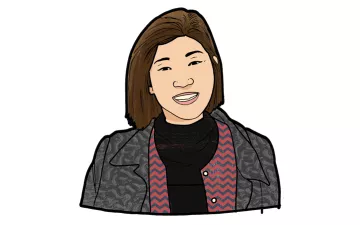
Yong Jung Cho
Youth organizer | New York City
Yong Jung Cho is a 26-year-old organizer perfectly suited for the Trump era. Before it, she worked at 350.org, first as a youth and student coordinator for the 2014 People's Climate March and later organizing campus fossil fuel divestment activists in the Southwest and primary voters in New Hampshire. But in the debacle of the 2016 election, she says, "the whole progressive ecosystem failed." So she cofounded #AllofUs, an organization made up of folks from Occupy Wall Street, the climate movement, Black Lives Matter, and others. Already, its members have pressed Senator Charles Schumer (D-N.Y.) for stronger action against Trump and staged a candlelight vigil at the White House.
"All of the movements that we've been fighting for are under attack," she says. "The climate movement is a part of the broader struggle. Where we have to contest for power next is electoral."
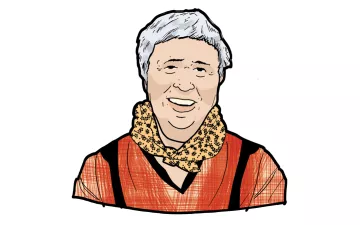
Melinda Goodwater
Sierra Club Outings leader | Sunnyvale, California
In 1988, Melinda Goodwater signed up for her first Sierra Club outing—a weeklong trek in Yosemite. She had backpacked before, but says, "I didn't learn how to do it right until I went with the Club." By 1992, she'd decided she wanted to become an Outings leader herself. Since then, Goodwater has led more than 135 trips. "Most leaders lead up to a dozen trips total, so the fact that she's still going strong is mind-blowing," national Outings director Tony Rango says. "That's a lifetime of building new commitments to the Club." She's taken groups through the Rockies, the Pacific Northwest, the Southwest, and Alaska. She's also traversed England's Coast to Coast Walk, climbed Mt. Kilimanjaro, and trekked through Patagonia—all as a volunteer leader. Goodwater even switched from a full-time job as an electrical engineer to consulting so she could devote more time to leading trips. Now that she's retired, she makes up to 12 excursions a year. "I can do anything on my own," she says. "The joy comes from sharing."
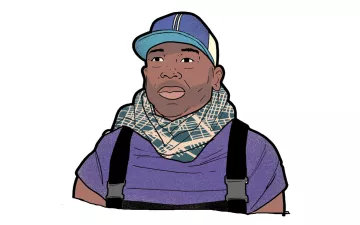
Chad Brown
Angler evangelist | Portland, Oregon
Soul River Runs Deep looks like a typical fishing store: There are rods, reels, and hats and jackets, many of the latter designed by owner Chad Brown, a onetime Manhattan adman. It's all a front for a larger mission, though—to empower youths by getting them outdoors and introducing them to angling. After serving in the navy, Brown suffered from PTSD and crippling depression. Then he discovered fly-fishing, which, he says, "gave me a rebirth." His nonprofit, Soul River Inc., housed in the back of the shop, organizes fly-fishing trips that pair urban kids with veterans. Some "deployments," as Brown calls them, go to Portland-area rivers like the Deschutes, while others go as far as the Arctic National Wildlife Refuge. The vets get a chance to mentor teens; the teens get to build their confidence through increased self-reliance. Everyone gets an education in climate change. Brown says, "The seed is fly-fishing, but the end goal is to build them into outdoors ambassadors."
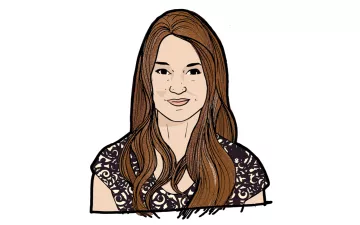
Shailene Woodley
Actress and activist | Los Angeles, California
Last October, 27 protesters were arrested at the Standing Rock Sioux Nation on Indigenous Peoples' Day—the night following the U.S. Court of Appeals' denial of an injunction to halt Dakota Access Pipeline construction. Among them was Shailene Woodley, star of the sci-fi series Divergent and the film Snowden. Woodley, no newcomer to activism, broadcast her arrest to thousands via Facebook Live.
The 25-year-old has previously spoken out in support of food security and renewable energy and spent last summer caravaning across the country to meet with grassroots activists and, ultimately, to protest at the Democratic National Convention. Woodley's dedication to the Standing Rock fight remains strong—in January, she spoke outside the Sundance Film Festival, urging Robert Redford's Sundance Institute to cut ties with sponsor and pipeline funder Chase Bank. Like any good millennial, Woodley makes use of Instagram; she rallies her followers to launch local divestment movements against pipeline-supporting banks. "If there's no money invested in the pipelines," she's stated, "they can't be built."
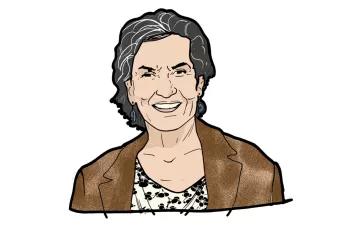
Rose Thelen
Beyond Coal volunteer leader | Clearwater, Minnesota
When Rose Thelen first heard of the Beyond Coal campaign in 2013, something clicked. She lived near the largest coal plant in Minnesota and worried about its health and environmental effects on her rural community. So she became a Beyond Coal volunteer leader and spent the next four years organizing meetings, writing letters, and spearheading petitions. At times, Thelen was the only one in her community willing to publicly oppose the plant, a major job provider. "People were silently with me but afraid to speak out," she says. Last October, the state utility agreed to retire two coal-burning units and committed to doubling its output of renewable energy. "Rose has been fearless in the face of hostile opposition," says Beyond Coal representative Alexis Boxer, "and she was patient beyond belief as we took on a seemingly indomitable target." In her day job, Thelen travels the world to help develop protections for victims of domestic abuse. "She is tireless in her efforts to make the world a better and safer place," Boxer says.'
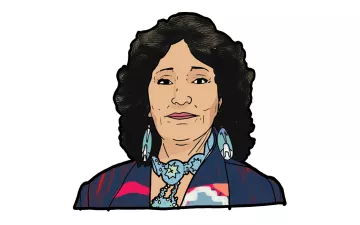
LaDonna Brave Bull Allard
Water protector | Standing Rock Sioux Nation, North Dakota
When, in April 2016, LaDonna Brave Bull Allard established a resistance camp on her family's property along the Cannonball River, few people—even within her Standing Rock Sioux tribe—had heard of the Dakota Access Pipeline. By summer, thousands of self-described water protectors had gathered at the Sacred Stone Camp. By fall, "we had people from the whole world," remembers Brave Bull Allard, 61 and a grandmother of 18. "We had people from the Amazon. We had Mongolians. We had Aborigines from Australia. All because water is life." The water protectors' courage in the face of police violence, including the use of water cannons and attack dogs, galvanized supporters. DAPL became a cause célèbre and an issue in the presidential race. Although the Trump White House has approved the pipeline, Brave Bull Allard says the spirit of Standing Rock has become contagious. "We have people in Texas and Louisiana and different parts of the U.S. and Canada standing up for water."
 The Magazine of The Sierra Club
The Magazine of The Sierra Club



